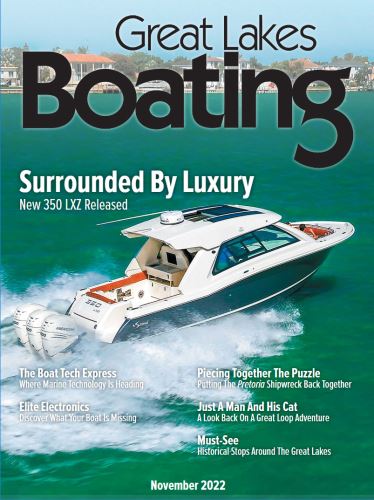.jpg_1600.jpg)
When we think about ships going down, we tend to think of Titanic-scale big accidents; ships crashing into rocks and icebergs, or being overthrown by 40-foot waves, all resulting in complete wreckage. That kind of hefty damage can make it difficult to pinpoint where exactly a ship went down, and divers might find pieces of boats along the lake’s floor with the front over here and the mast over there. That’s why when the Cornelia B. Windiate left port in the winter of 1875 and never reached its destination, it was hard to figure out exactly what happened.
Living A Short Life
Not much is known about the Cornelia B. Windiate, but her time trading goods across the Great Lakes only lasted about a year. The triple-masted canal schooner was built in Manitowoc, Wis., in 1874 by Thomas Windiate and James Butler, and then named after Thomas’s daughter. About 136 feet long, the schooner took many trips and was able to transport around 16,000 bushels of grain each time.
On November 27, 1875, rather late in the season, tradesmen were hoping for a very profitable haul to end the year. The Cornelia B. Windiate left Milwaukee with one last heavy load of 21,000 bushels of wheat. She and her nine crew members headed for Buffalo, N.Y., but she never reached her destination. In fact, she never reported reaching the Straits of Mackinac, so it was assumed she went down somewhere in Lake Michigan, and since none of the crewmen were ever heard from again, there were no survivors to argue otherwise.
What Happened Here?
Cut to 100 years later in May of 1986. Divers Paul Ehorn and John Steele were in Lake Huron, just off the Presque Isle about 180 feet deep. They came upon a small schooner that was standing on the lake floor in near perfect condition. All three masts were standing upright, the cabin was intact, and even the yawl boat had settled down at the starboard side. As the ship was in such good condition, Ehorn went to the side of the ship, and was able to clearly see the Cornelia B. Windiate carved in the side, perfectly preserved.
Other than a missing bowsprit, the schooner had absolutely no obvious damage, meaning that a crash had not caused the Cornelia B. Windiate to sink. As port records that year state, the ship had been overloaded with grain. Experts concluded the grain froze, adding too much weight for the little schooner to handle, and resulting in a very slow sinking of the ship. Freezing cargo was not uncommon on the Great Lakes, especially so late in the year. The remaining yawl boat also leads to speculation that the ship itself was trapped in ice, or the crewmen would have used it to escape. Instead, the men probably attempted to seek safety by walking on the frozen lake, and must have perished in the process since none were ever heard from.
A Dive Like No Other
The preservation of the Cornelia B. Windiate is what sets it apart from other sunken ships, and also makes it a very popular wreck for divers to visit. One diver, Jan Underhill, shared the story of her first time seeing it.
“I reached the top of the mast at a depth of 90 feet, where I was impressed to find the crosstrees and even the yardarm intact in place,” said Underhill. “Continuing down the mast, I saw the entire ship loom into view below, looking eerily like no time had passed since it had settled gently on the bottom. Intact cabins are relatively rare, but it is really unusual to see even the hatch covers still in place, as the force of trapped air tends to blow deck structures off as a ship sinks.”
Underhill enjoyed this dive so much, she’s gone back a few times. She says that since her first trip zebra mussels have come to coat every surface.
“We came back to take still photos the following season to find the zebra population had doubled,” added Underhill. “While the clearer water now allows spectacular views of the entire vessel, it no longer looks untouched by time.”
The Cornelia B. Windiate is a stunning but somewhat curious sight to see. This is perhaps because we don’t generally see flawless ships at the bottom of a lake, we see them on top of the water sailing through the waves. The Windiate’s preservation is what helps us look back in time and see it for everything it used to be, not just pieces of a broken boat.
For More Information:
Jan Underhill Dives
www.greatlakesunderwater.com
Jitka Hanakova Pictures
www.shipwreckexplorers.com

